
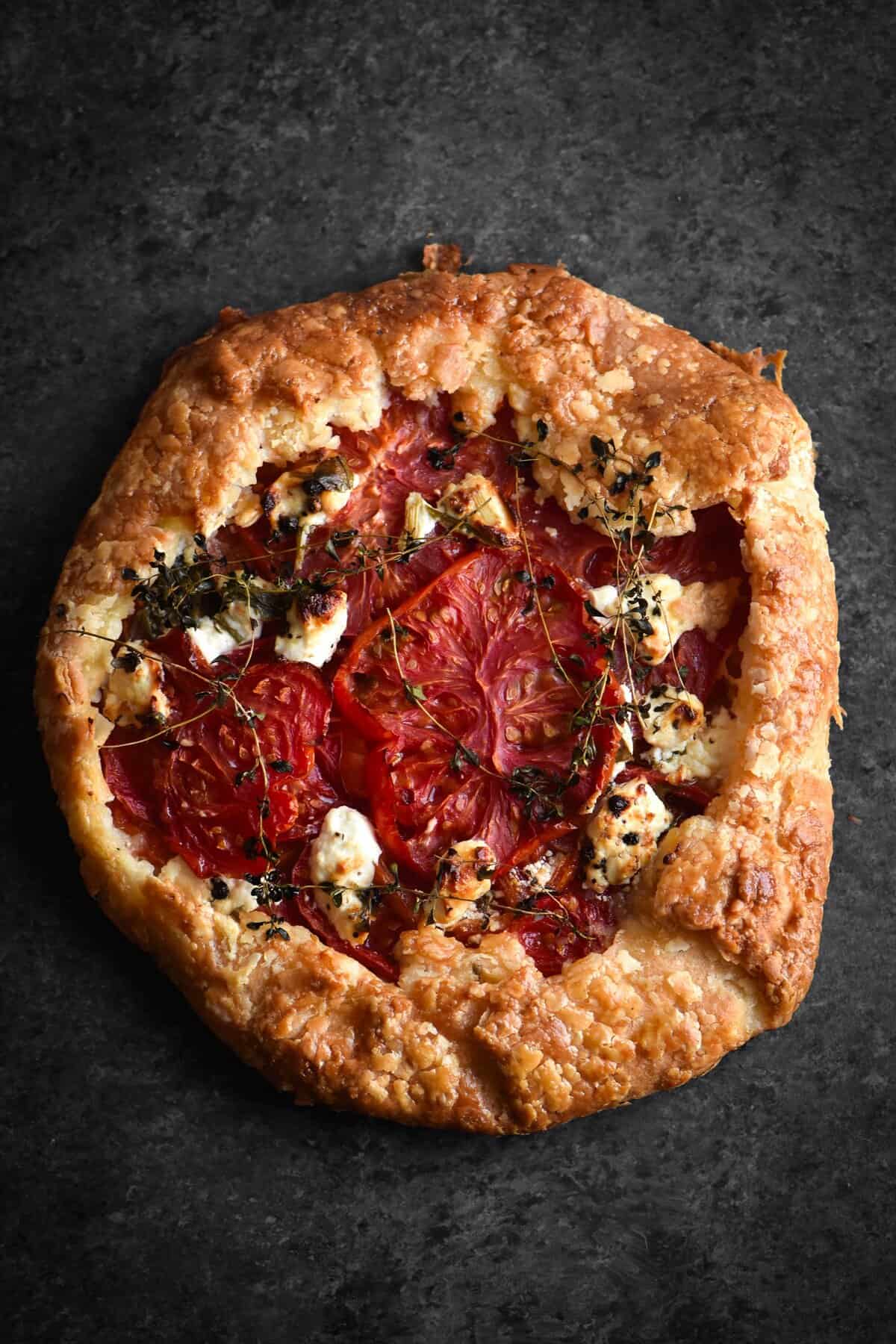
This grain free rough puff pastry is one of my more exciting recipes to date. Although I wanted to have this posted before Thanksgiving, perfection can’t be rushed. So, Thanksgiving 2023?
Grain free rough puff pastry (nut free)
This grain free, gluten free rough puff pastry is made without nuts. It uses a combination of cassava flour and potato starch to create a buttery, flaky and light pastry that can be used in all manner of applications.
I have provided options for both a sweet and savoury grain free pastry. You can use this grain free pastry for anything from an apple pie to vegetarian sausage rolls.

Why this grain free rough puff pastry works
I wanted to get straight into this, because I’m sure people will ask about substitutions (spoiler alert: there aren’t any). I think it’s important to explain why each ingredient is included and what purpose they serve in the pastry.
Cassava flour
The cassava flour is the backbone of this grain free pastry. Cassava flour has a lot more stretch and elasticity than other gluten free flours and it also grain free. I use it a lot in pancakes, but I have an amazing grain free, nut free bread recipe too. It is a lovely neutral flour that provides a lot of stretch and elasticity for a gluten free (and grain free) flour. Think of it as the white rice flour of the grain free world. This pastry cannot be made without cassava flour. If you’re looking for a gluten free (but not grain free) pastry, there is a great recipe in my cookbook. Similarly, if you are looking for a pastry with substitution options – the book has plenty.
Cassava flour is made from the cassava root, which is also what tapioca flour is made from. The difference between the two is that cassava flour uses the starch and the root, while tapioca is just the starch. Cassava flour tends to become chewy or mochi like when used alone or with too much liquid.
Potato starch
I discovered while developing this recipe that potato starch is quite hard to find outside of bulk food stores. So, I promise I wouldn’t make you include a trickier to find ingredient without good reason.
During testing, I tried to find a balance using cassava flour, tapioca flour and potato starch. In the end, I found that using tapioca flour in the pastry resulted in a chewy baked good once baked. This was particularly noticeable when I baked it with a wet filling, like apple pie.
Potato starch balances out the chewy potential of cassava flour in this grain free pastry. It makes for a lovely flaky pastry that isn’t chewy once baked. I did experiment with almond meal, but I found it lead to a shortcrust style result. Potato starch is the missing link for excellent grain free pastry.
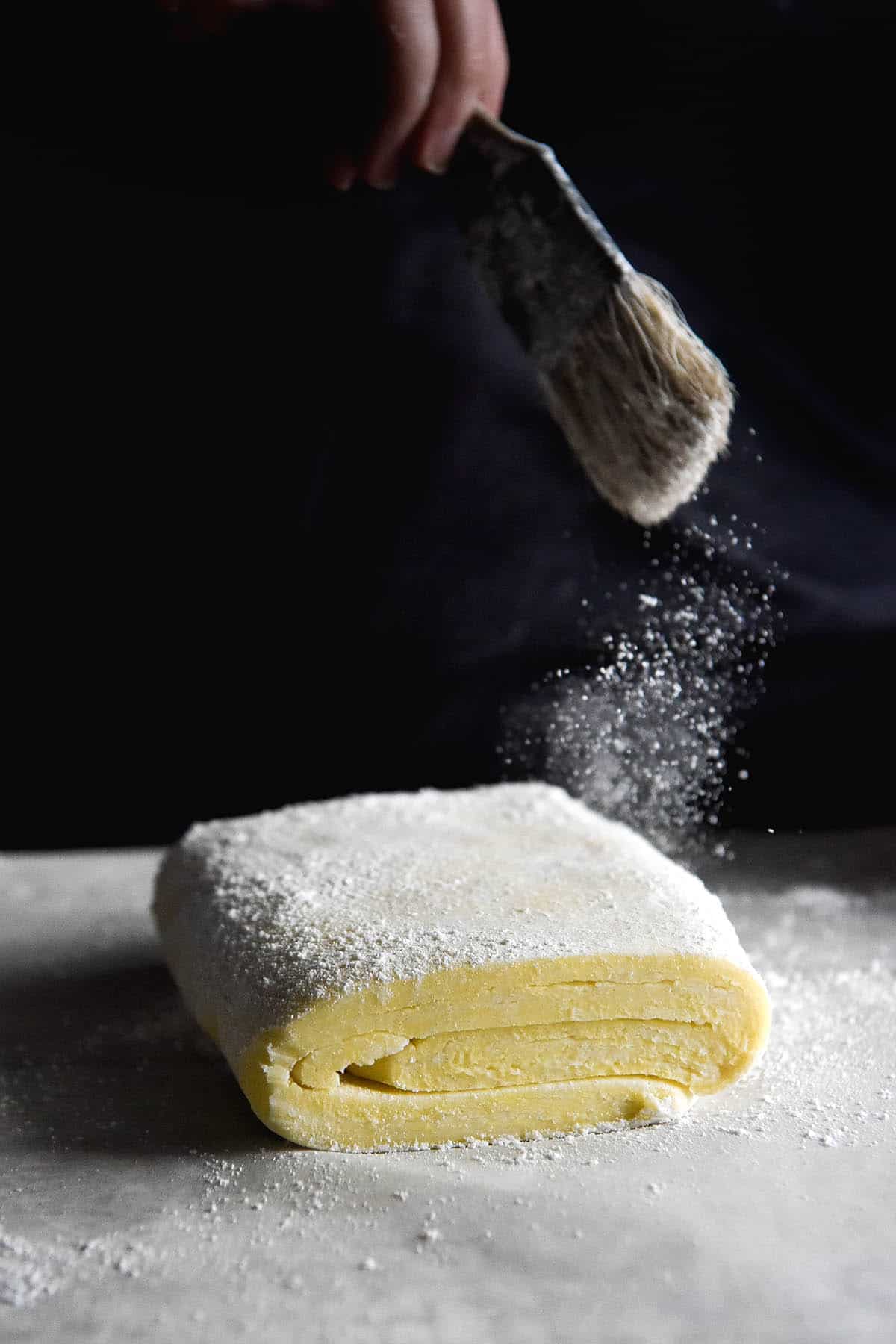
Grain free rough puff pastry notes
I have no recipe substitutions at this time. Grain free rough puff is a delicate balance, and I found this to be the right ratio. Cassava flour can be chewy when combined with liquids. This is why we include potato starch as well. Potato starch currently doesn’t have a substitute.
I sometimes find that unsalted butter is better for laminated baked goods. You can use whatever works for you. Ensure you adequately compensate the pastry with salt if you use unsalted. This includes the sweet pastry – it really balances out the flavours.
Make sure you sieve your icing sugar for even results.
It’s important to ensure this pastry is cooked through really well to avoid it being chewy. I find it takes longer to cook and brown than traditional gluten free pastry.
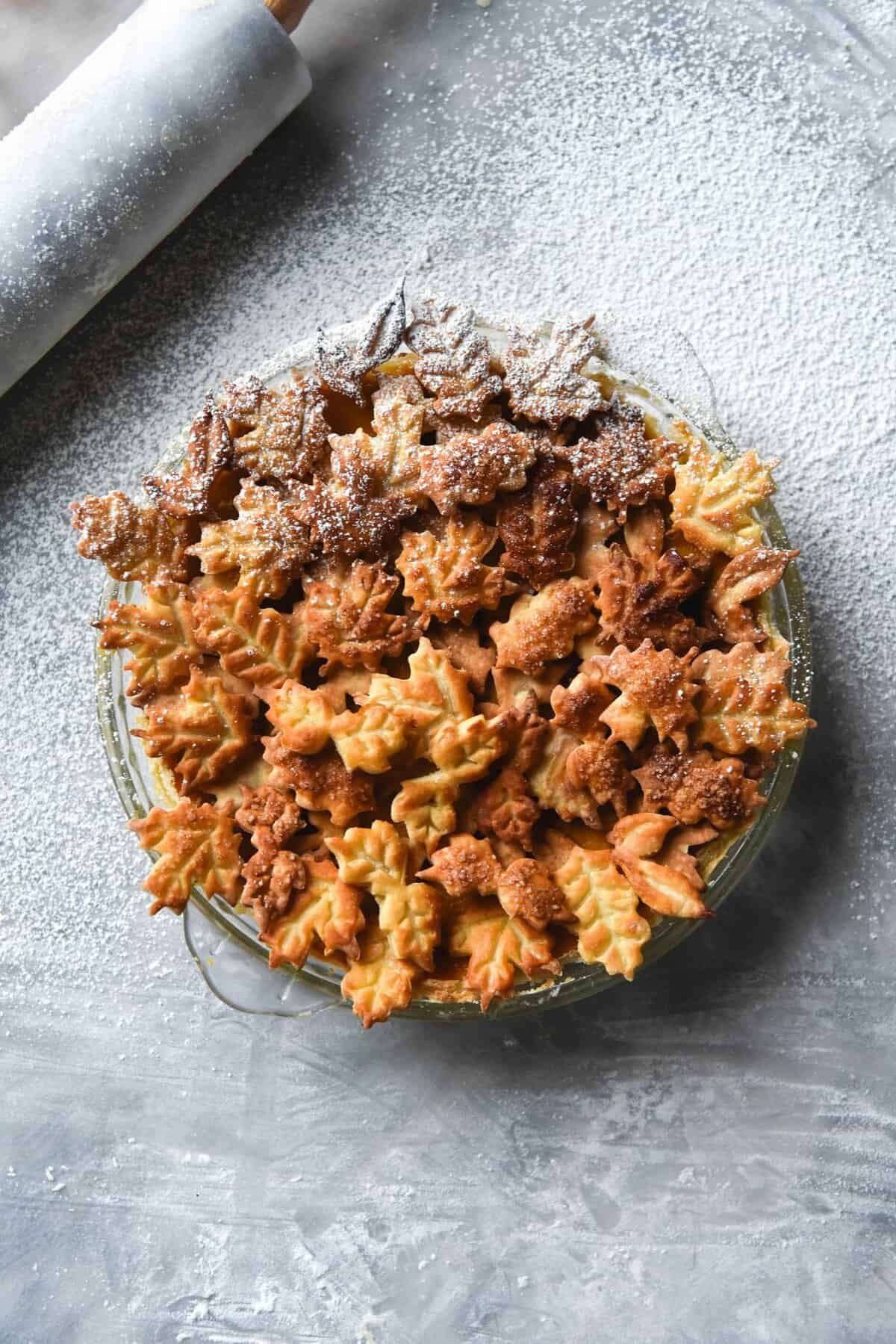
What is lamination?
Lamination is a technique whereby butter is rolled into dough to create small pockets and layers of butter. The word lamination shouldn’t scare you off – it’s quick and simple and makes for great pastry.
Think of making puff pastry. You roll and fold the butter into the dough, creating hundreds of layers of butter that puff up in the oven. This is what we want to achieve with this rough puff pastry, which basically just means easy puff pastry. I promise it is easier than it sounds!
Not all rough puff pastry is laminated, but I think it’s really important here. Laminating grain free pastry gives it flakiness and texture that is a lot more akin to traditional pastry.
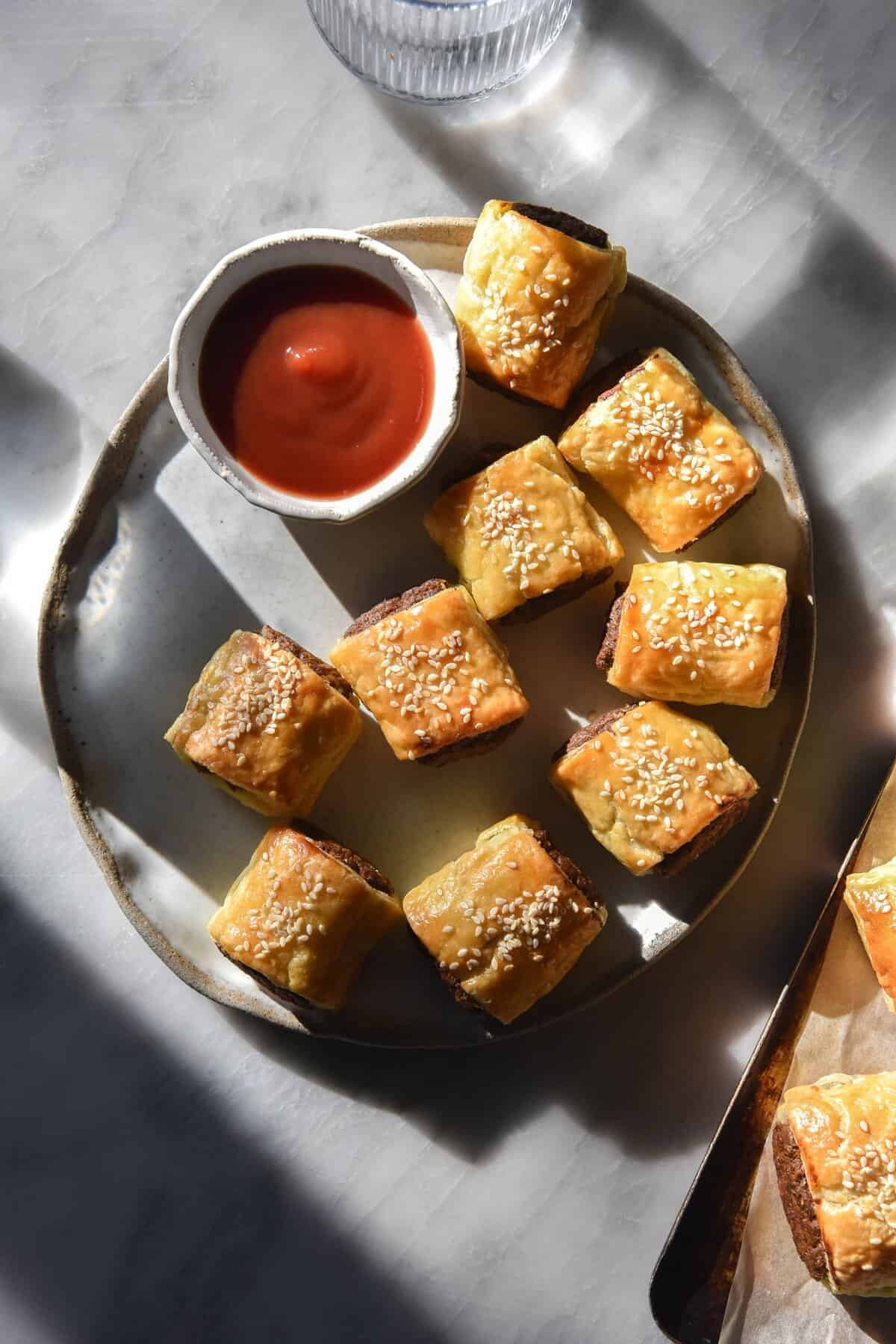
How do I laminate this grain free rough puff pastry?
Once you have made the rough puff dough, it’s a matter of doing some quick lamination to add in butter layers. The lamination involves three business letter folds.
To laminate this grain free pastry, flour a sheet of baking paper with tapioca flour. Baking paper ensures you can quickly whisk it into the fridge if it starts to get too warm or sticky.
Roll the pastry into a rectangle about 30cm long and 15-20cm wide. Dust the pastry of excess flour, then fold the top third of the pastry down onto the middle of the pastry. Dust again, then fold the bottom third up over the middle of the pastry. This is one business letter fold.
Next, turn the pastry so that the short side faces you. Complete the process of rolling and folding two more times, for a total of three folds.
Unlike croissant making, it’s not the end of the world if the pastry snaps as you roll it. In fact. you can expect it to snap (at least for the first two folds). Sometimes, by the final fold, the pastry doesn’t snap (but don’t worry if it does).
From here, your grain free rough puff pastry goes back into the fridge to chill before use.

Sweet applications for your grain free rough puff pastry
Savoury recipes for your grain free pastry
- This feta and greens pie that is FODMAP friendly and made without onions or garlic
- These spinach and feta rolls (also low FODMAP)
- Vegetarian sausage rolls made with tofu
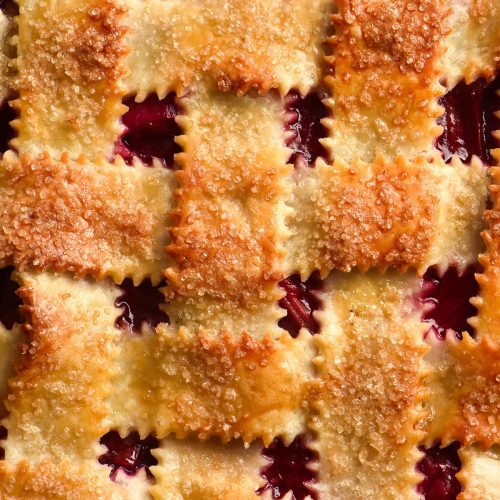
Grain free pastry (nut free)
Ingredients
- 200 g butter salted or unsalted, chilled and cubed
- 150 g cassava flour
- 150 g potato starch
- 3/4 – 1 teaspoon xanthan gum
- 1/4 teaspoon fine salt for a sweet version or 1 teaspoon for a savoury version
- 75 g icing sugar omit for a savoury version
- 125ml (1/2 cup)* iced water, only as necessary
- Tapioca flour for rolling out the pastry
Instructions
To make the pastry:
- Make sure your butter is cubed and chilled before you begin.
- Whisk to combine all the dry ingredients in a large mixing bowl.
- Add the cubes of butter and use your fingertips to rub the butter into the flour mixture.
- Use a clicking motion to press the cubes of butter forwards through your fingers, creating small sheets of butter in the dough.
- Once all the cubes are rubbed in, carefully begin adding the water. You want the pastry to just come together without any dry spots, while adding as little water as possible. Less water (without the pastry being crumbly or dry) = crispier pastry.
- Continue adding water until you can just bring the dough together in a ball. There should be no dry spots. Decant the pastry into a large sheet of cling film. Wrap it loosely and then press it down into a flat rectangle. Place the pastry in the fridge to chill for 30 minutes.
To laminate the pastry:
- Once chilled, lay the pastry on a large piece of baking paper floured liberally with tapioca flour.
- When the pastry is warmed enough to be just a bit malleable, begin rolling it out into a rectangle. Size doesn’t matter, but it does need to be able to fold into three. I aim for about 30cm long.
- Once the pastry is rolled, dust off the excess flour. Take the top third of the pastry and fold it down onto the centre third of the pastry. Then, take the bottom third and fold it up over the middle third. It will likely crack at the sides, and that’s fine. If you feel like it’s too cold to roll out, leave it to sit for 5 or so minutes (climate dependent – I developed this recipe in a warm kitchen, so your pastry might need longer).
- Turn the pastry stack so that the short side faces you. Repeat the process of folding and rolling the pastry two more times, for a total of three folds. Dust the pastry of excess flour and return it to the fridge to chill. After 30 minutes chilling the pastry is ready to use.
- For best results, use the pastry within a day. It can also be thoroughly wrapped and frozen. Allow frozen pastry to come to room temperature before use.

i don’t tolerate xanthum gum- can this be made with konjac, or psyllium, or flax, or chia seends?
thanks for awesome recipes and all your hard work!!!
Hi Irene! I haven’t tested this specific recipe without xanthan gum but there’s a rough puff pastry that uses psyllium in my cookbook (it’s not grain free though)
Can I leave out the icing sugar?
Hi Antonia! Yes, as it says in the recipe card you can omit icing sugar for a savoury version 🙂
Hi! I was curious if the icing sugar you are using contains cornstarch? Is there a brand you recommend that does not have cornstarch? Thank you!
Hi Kathy! Not sure where you are based but here in Aus the icing sugar sold as ‘pure icing sugar’ is 100% icing sugar with no filler. I think tapioca flour is generally what’s used in the icing sugar here, so I’m guessing you might be based elsewhere.
I would recommend searching for pure icing sugar (generally in a smaller bag) or even making your own by grinding caster sugar in a spice grinder 🙂
A great place for potato starch is an Asian Grocer. They also quite often stock tapioca starch, cassava flour and sweet potato flour/starch as well as most rice flours too. Sorry, my happy place!
Oooh great tip! I love getting my rice flour from there but I never even thought to look for potato starch